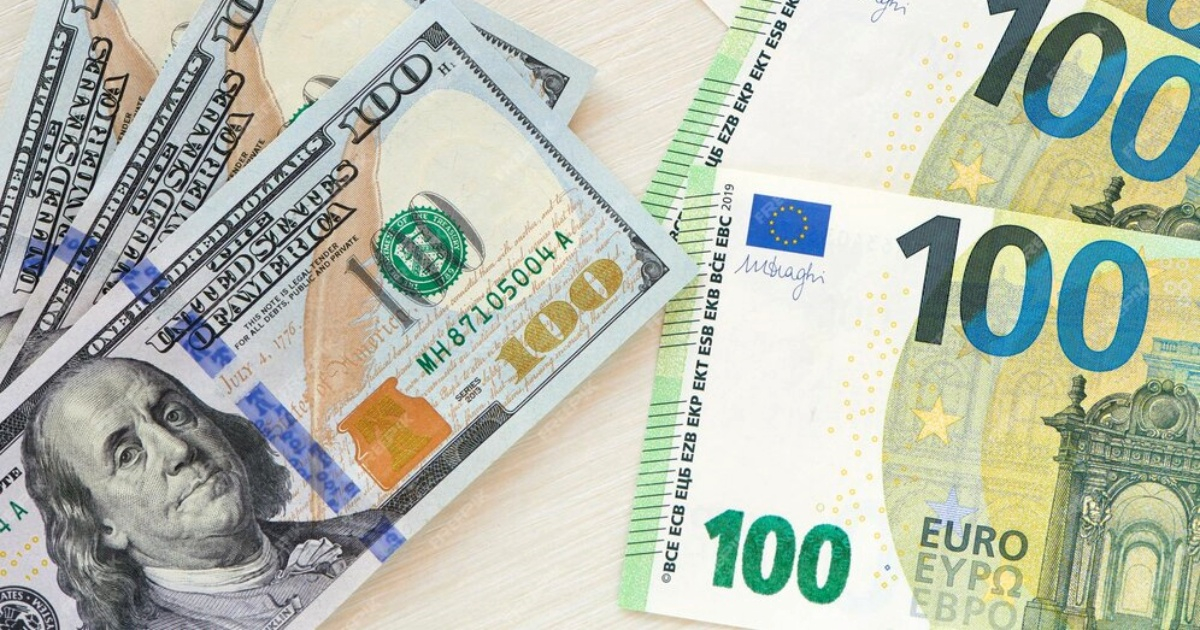
Exclusive: Amid geopolitical realignments, Ukraine contemplates switching from the dollar to the euro
Ukraine is beginning to explore the possibility of moving away from the U.S. dollar, potentially aligning its currency more closely with the euro in light of the fragmentation of global trade and its strengthening connections to Europe, as stated by Central Bank Governor Andriy Pyshnyi in an interview with Reuters.
Pyshnyi stated in emailed remarks that potential accession to the European Union, a strengthening of the EU’s role in ensuring defense capabilities, greater volatility in global markets, and the likelihood of global trade fragmentation are prompting the central bank to reconsider whether the euro should serve as the reference currency for Ukraine’s hryvnia instead of the dollar.
“This task is intricate and demands thorough, adaptable preparation,” Pyshnyi remarked, in the clearest statements by a Ukrainian official regarding a potential change.
The dollar holds a prominent position in international trade and constitutes the bulk of global reserves. Significant economies such as Saudi Arabia and Hong Kong link their currencies to the dollar.
Under President Donald Trump, the U.S. has initiated a trade war by implementing potentially the highest tariffs in a century, leading some observers to speculate about the future status of the dollar as the global reserve currency.
As Ukraine enters its fourth year of battling an invasion by Russia, it has also experienced a temporary reduction in military assistance from Trump.
Leaders from Europe, including those from the EU, have committed to bolstering Kyiv’s military to establish it as a fundamental element of future security in Ukraine; however, advancements have proven challenging.
In the meantime, Ukraine reached an agreement that grants the United States preferential access to new mineral deals in Ukraine and provides funding for investment in the country’s reconstruction.
Since Trump’s return to the White House, the greenback (.DXY) has declined by over 9% against a basket of major currencies as investors retreat from holding U.S. assets.
Certain experts caution against linking the dollar’s strength to its status as a reserve currency. Historically, dollar holdings have been associated with security alliances and military connections to Washington.
According to Pyshnyi, transactions involving the U.S. dollar remain predominant across all segments of the FX market; however, there has been a gradual increase in the share of euro-denominated transactions in most segments, albeit “so far moderately.” He refrained from providing further details.
In 1996, Ukraine introduced the hryvnia, and throughout the years, it has utilized the dollar as its reference currency.
Following Russia’s invasion in February 2022, the central bank swiftly implemented capital controls and established a peg for the hryvnia at an official rate of approximately 29 to the U.S. dollar. Ukraine had to devalue later because of a buildup of fiscal imbalances.
In October 2023, the central bank transitioned from a firm peg to a managed exchange-rate regime that utilizes the U.S. dollar as the reference point, serving as the measure for foreign exchange interventions and for moderating fluctuations in the exchange rate.
The EU commenced membership discussions with Ukraine and Moldova almost a year ago, yet a lengthy and challenging journey remains before they can become part of the bloc. In February, EU President Ursula von der Leyen stated that Ukraine could join by 2030, as long as it maintains its current momentum in implementing reforms to its political and judicial systems.
Moldova has transitioned its reference currency for the Moldovan lei from the dollar to the euro as of January 2.
According to Pyshnyi, a resurgence in investment and consumer activity, driven by strengthened ties with Europe and a return to economic normalcy, could lead to a modest increase in economic growth over the next two years, projected at 3.7-3.9%. However, the overall economic path remains contingent on the evolution of the conflict.
“According to Pyshnyi, a swift conclusion to the war would undoubtedly yield favorable results, particularly in terms of economic benefits, provided it includes security assurances for Ukraine.”
“It is important to recognize that the economic advantages of concluding the war may require time to fully develop.”
Ukraine is depending on outside financial support to assist in funding the war effort. Pyshnyi expressed his expectation of $55 billion this year, which would not only address the budget deficit but also be allocated to establish a public-finance reserve for the upcoming years, when aid volumes are anticipated to decrease.
“According to Pyshnyi, Ukraine is expected to receive approximately $17 billion in 2026 and $15 billion in 2027.”
All Categories
Recent Posts
Tags
+13162306000
zoneyetu@yahoo.com



